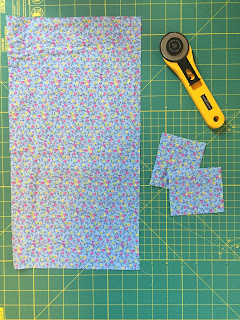If you are suddenly quarantined, or are choosing to self-isolate, or your school is closed, you might find yourself at home with your child(ren) for substantially more time than normal. You are not on vacation and likely have your own routines that are upended by this. If you are looking for any ideas, we quickly put together a few and may add more if it is of interest. These can supplement things you might already be doing, or more formal curriculum you might be following. We have been homeschooling for the majority of Vivian's education, and I study cognitive science specifically in education. We are both still learning and discovering, every day.
Main tips: be curious, be patient, have a routine.
Start the lockdown explaining that good sleep, good nutrition, and learning help us grow. Measure your child’s height and record it on paper.
Tell your kids you are going to build an album to document your work as a family over the coming weeks.
Make a nutritious breakfast Monday - Friday. Everyone clears their own dishes.
Responsibility is empowering.
Have a set order of activities for every day, Monday - Friday. Share the plan. Once they are done, free time. Collect and date all work for the album.
Routines provide a sense of control and security.
Pick a classic book. Read one chapter a day out loud. Everyone creates a summary afterwards – either written, performed (song, acted out) or illustrated. Compare and constructively comment: what was confusing, what was done particularly well, and what was overlooked.
This supports literacy and reading comprehension, idea formation, creative expression.
Pick a natural phenomenon. Guess why or how it occurs – incorporate an exploratory exercise when possible. Look it up, read the explanation, discuss it, create a summary (written, performed, or illustrated). Compare and constructively comment.
Example: aerodynamics. Exploratory exercise: paper airplanes. Make them, test them (this could last for a while, enjoy that). Look up aerodynamics. Look up tips for better paper airplanes, try them out. Race your new versions. Summarize what improved them (what you had tried at first, why it didn’t work, what you changed, why that mattered).
Learning with curiosity as the driving force is our natural motivator. Learning things by first understanding what we think we know and what we do not know creates space in our brains for inserting and really connecting the new, improved information. That is how we build knowledge.
Construct a personal crossword puzzle (5, 10, 15 words) – it is harder than it sounds. Swap them with friends online. You can take a picture of it and email or text it. Agree on a due date.
This supports literacy, reading, spelling, and logic. Plus it is an expression of things that are interesting or important to us, and connects us with others by sharing them.
Art. Bring the outside world inside, bring their experience out, support their emotions, their memories, their imaginations. From memory: Draw your favorite tree. Draw a best friend. Draw the worst day at school/work. Draw the best. Draw the first thing you are going to do after the restrictions are over. Make sure to participate. Talk about your drawing and invite your children to talk about theirs.
Exploring our memories through art is a powerful way to revisit and reflect on them.
Have jigsaw puzzle time.
A little mellow, a little fun, a little silly, plus strengthens mental speed and thought processing. Importantly, it’s a group effort. Everyone is doing a great job working hard.
Create lunch together where you exclusively use a foreign language they are learning or else pig latin.
Again, it’s both silly and challenging and collective work – to speak and be understood.
With older kids, once a week have them create a dinner recipe for you to follow (this way you get to vet it before using precious resources, and it is a balanced division of labor) – they can get ideas, tips, or full recipes for you to use online, using the ingredients on hand. After dinner, rate the meal on taste, presentation, and creative combinations of ingredients. If their idea is not approved of beforehand and used, they do the dishes.
Again, a little fun, a little silly, and it turns a necessary event into a thoughtful project.
Incorporate math where you can. Mathematizing everyday activities reinforces why it is a valuable subject to learn:
· How many pieces of the puzzle must how many family members connect each day to finish the puzzle within X days? Stick to that and see if it’s true.
· Look up the price of the ingredients you are cooking with (if the prices are not still on them) and figure out the cost of every meal (total and per person).
· Take a recipe and halve it, or double it. Have them write down the new measurements and check it before anyone attempts it.
If they need to study with flashcards, have them write them out – do not use an app.
Certainly, if you have any craft you love and can share with them, do!
Any level of knitter can create a square, and those can be stitched together to create a warm blanket to share.
Save recreational screen time for after lessons.
Tell your children that they worked hard that day and you enjoyed spending time with them. Mean it. Tell them you love them - no matter how hard the day was. I never had to live under an existential threat that upended my entire life quite suddenly. This must be hard for them.
Under normal and abnormal circumstances, hearing that we are loved is everything. That is the most important thing to our children.
Get your own work done while your kids are working independently.
Get up early or stay up a little later to get some of your own work down.
These are unusual times and everyone has to make adjustments.
Big hug.















